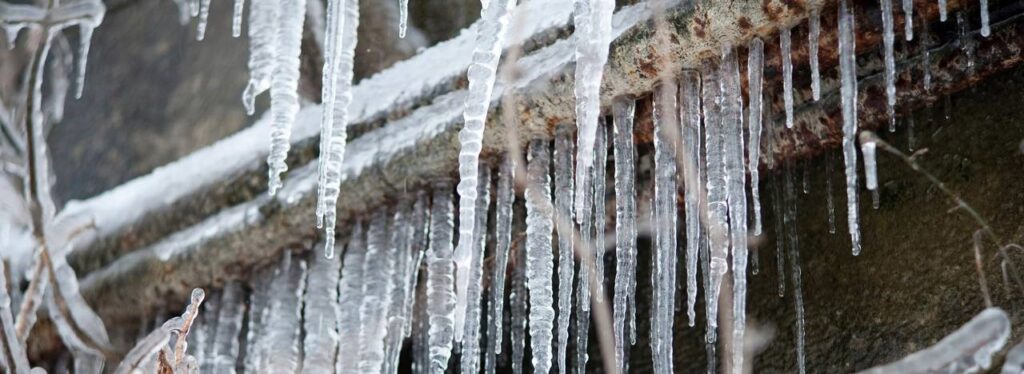Crucial Tips for Preventing Frozen Pipes in Winter Conditions
Crucial Tips for Preventing Frozen Pipes in Winter Conditions
Blog Article
Just how do you feel on the subject of Prevent Frozen Pipes ?

Cold weather can ruin your plumbing, especially by freezing pipes. Right here's exactly how to stop it from occurring and what to do if it does.
Introduction
As temperature levels decline, the risk of frozen pipelines rises, potentially leading to expensive repair work and water damages. Comprehending how to stop icy pipes is crucial for house owners in cold climates.
Comprehending Icy Pipelines
What triggers pipelines to freeze?
Pipelines freeze when subjected to temperatures below 32 ° F (0 ° C) for expanded durations. As water inside the pipes ices up, it increases, taxing the pipe wall surfaces and possibly creating them to burst.
Threats and damages
Frozen pipelines can bring about supply of water disturbances, home damage, and expensive repair work. Burst pipelines can flooding homes and trigger comprehensive structural damage.
Indicators of Frozen Water Lines
Determining icy pipes early can avoid them from rupturing.
How to recognize icy pipelines
Try to find reduced water circulation from faucets, uncommon odors or noises from pipelines, and visible frost on revealed pipelines.
Prevention Tips
Insulating at risk pipes
Cover pipelines in insulation sleeves or utilize warmth tape to secure them from freezing temperature levels. Focus on pipes in unheated or outside locations of the home.
Heating methods
Maintain interior spaces effectively heated up, particularly areas with pipes. Open up cupboard doors to allow warm air to distribute around pipes under sinks.
Shielding Exterior Pipes
Garden hoses and outdoor faucets
Separate and drain pipes yard pipes before winter season. Set up frost-proof faucets or cover outdoor taps with shielded caps.
What to Do If Your Pipelines Freeze
Immediate actions to take
If you presume frozen pipelines, keep faucets open up to soothe pressure as the ice thaws. Utilize a hairdryer or towels soaked in warm water to thaw pipes slowly.
Long-Term Solutions
Structural adjustments
Think about rerouting pipelines far from exterior wall surfaces or unheated areas. Add extra insulation to attics, basements, and crawl spaces.
Upgrading insulation
Purchase high-grade insulation for pipelines, attics, and wall surfaces. Correct insulation aids keep regular temperature levels and decreases the risk of frozen pipes.
Conclusion
Stopping frozen pipelines needs aggressive measures and quick feedbacks. By recognizing the reasons, indications, and preventive measures, home owners can shield their plumbing throughout cold weather.
6 Proven Ways to Prevent Frozen Pipes and Protect Your Home
Disconnect and Drain Garden Hoses
Before winter arrives, start by disconnecting your garden hoses and draining any remaining water. Close the shut-off valves that supply outdoor hose bibs and leave the outdoor faucet open to allow any residual water to drain. For extra protection, consider using faucet covers throughout the colder months. It’s also important to drain water from any sprinkler supply lines following the manufacturer’s directions.
Insulate Exposed Pipes
Insulating your pipes is an effective way to prevent freezing. Pipe insulation is readily available at home improvement stores and is relatively inexpensive. Pay close attention to pipes in unheated areas such as the attic, basement, crawl spaces, or garage. Apply foam insulation generously to create a buffer against the cold. You can also wrap your pipes in heat tape or thermostat-controlled heat cables for added warmth.
Seal Air Leaks
Inspect your home for any cracks or openings that could let in cold air. Seal any holes around the piping in interior or exterior walls, as well as the sill plates where your home rests on its foundation. Additionally, make sure to keep your garage door closed unless you’re entering or exiting. Leaving it open creates a significant air leak that can lead to frozen pipes.
Allow Warm Air Circulation
During cold snaps, it’s essential to allow warm air to circulate evenly throughout your home. Leave interior doors ajar to promote better airflow. Open kitchen and bathroom cabinets to help distribute heat consistently around the rooms. If you have small children or pets, be sure to remove any household chemicals or potentially harmful cleaners from open cabinets for safety.
Let Faucets Drip
A small trickle of water can make a big difference in preventing ice formation inside your pipes. When temperatures drop significantly, start a drip of water from all faucets served by exposed pipes. This continuous flow helps prevent the water from freezing. Additionally, running a few faucets slightly can relieve pressure inside the pipes, reducing the chances of a rupture if the water inside does freeze.
https://choateshvac.com/6-proven-ways-to-prevent-frozen-pipes-and-protect-your-home/

I recently found that write up about Preventing and dealing with frozen pipes while browsing the internet. Be sure to pause to share this blog entry if you appreciated it. Thanks for your time invested reading it.
Book An Estimate Now Report this page